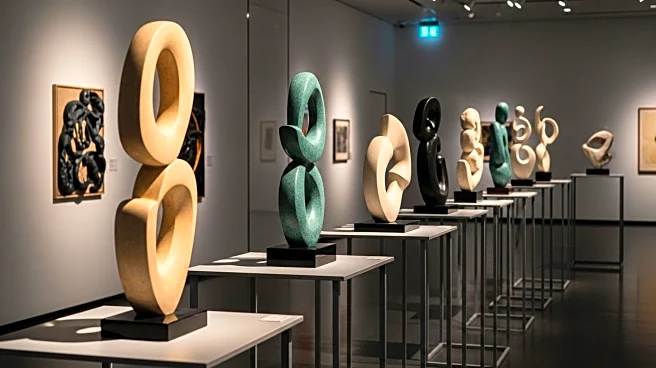What's Happening?
A newly discovered portrait miniature by Nicholas Hilliard, Queen Elizabeth I's official limner, has been identified as possibly depicting Henry Wriothesley, the 3rd Earl of Southampton. This discovery is significant due to its potential link to William Shakespeare, as Southampton is speculated to be the 'fair youth' mentioned in Shakespeare's sonnets. The portrait, which features an androgynous, bejeweled young sitter with long ringlets, was found with a defaced red heart on its reverse, suggesting a love scorned. Art historians Dr. Elizabeth Goldring and Emma Rutherford have identified the portrait, noting the unusual vandalism on its reverse, which was painted over with a black spear or spade. This discovery has reignited debates about the nature of the relationship between Shakespeare and Southampton, including the possibility that Southampton may have inspired some of Shakespeare's sonnets.
Why It's Important?
The discovery of this portrait has significant implications for the understanding of Shakespeare's relationships and inspirations. If the portrait indeed depicts Southampton, it could provide insights into the personal connections that influenced Shakespeare's work, particularly his sonnets. The defaced heart on the reverse of the portrait adds a layer of mystery and suggests a narrative of love and betrayal, which could reflect themes in Shakespeare's writings. This finding also highlights the cultural and artistic practices of the Elizabethan era, offering a glimpse into the personal and political dynamics of the time. The identification of the portrait by leading art historians underscores the importance of ongoing research and discovery in the field of art history, potentially reshaping interpretations of historical figures and their interactions.
What's Next?
The research conducted by Goldring and Rutherford, along with Prof Sir Jonathan Bate, is published in the Times Literary Supplement, which may lead to further scholarly debate and exploration of the relationship between Shakespeare and Southampton. The portrait's discovery could prompt additional investigations into other artworks from the period, seeking similar clues about historical relationships and influences. Art historians and Shakespeare scholars may continue to explore the implications of this finding, potentially uncovering more about the personal lives of historical figures and their impact on literature and art.
Beyond the Headlines
The discovery of the portrait raises questions about the representation of gender and beauty in Elizabethan art. The androgynous depiction of Southampton challenges traditional gender norms and suggests a nuanced understanding of identity during the period. The portrait's intimate nature and the sitter's gesture of clasping his hair to his heart may indicate early expressions of homoerotic imagery, offering insights into the cultural attitudes towards gender and sexuality in the late Elizabethan court. This finding could contribute to broader discussions about the portrayal of gender and identity in historical art and literature.












